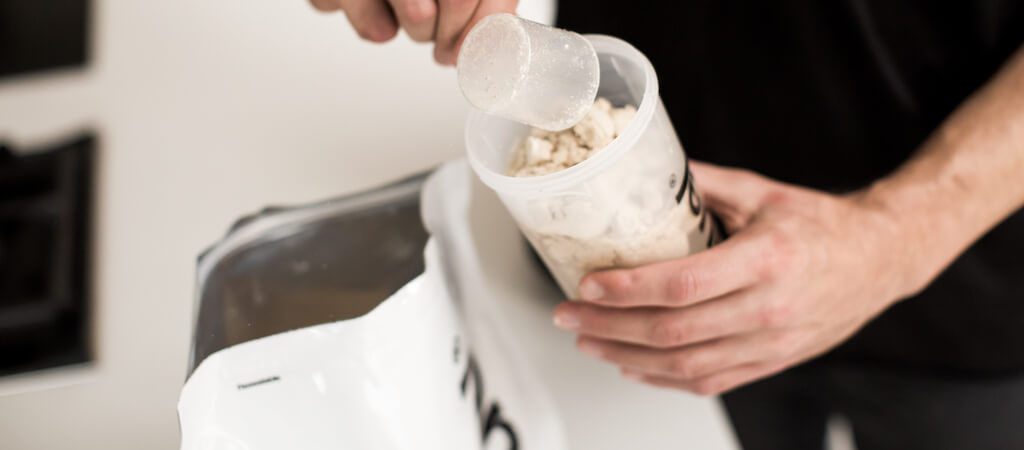Your Cart
Oops! Your cart is empty
2

Have you ever wondered how the raw ingredients make up Huel? Here, we’ve given you an insight into the processing steps of Huel Powder, but they’re similar for all of our products.
We ask a lot of questions when determining where the raw materials are sourced:
Each raw ingredient must go through some processing so the quality, consistency, safety and nutritional value is maintained. Find out more information about the processing of food.
Processing generates by-products which contribute to food waste and negatively impact the environment[1]. Often, their impact is overlooked in favor of lower transport mileage, but our suppliers and manufacturers make use of them to minimize product waste and production cost, reducing the final cost of our products for our Hueligans.
We need to make sure the ingredients are exactly what we expect, the supply chain is sustainable, and workers are getting a fair deal, so traceability of the ingredients and materials is key.
During transportation, optimizing logistics and liaising with suppliers is crucial. A limited amount of materials are used to protect, pack and ship full containers of Huel Products.
Oats (Avena sativa) are a uniquely nutritious food with high amounts of soluble fiber. Without milling, the oat kernel isn’t fully digestible and would be passed through our digestive system without us receiving its full nutritional value[2].
These are the steps we take to process the oats used in Huel: The whole oat is dehulled to expose the digestible dehulled kernels (groats).
Next, the bran is removed to stabilize and prevent rancidity, and the groats are heat-treated.
The groat is steel-cut for a consistent flake size, then rolled and milled into flour.
Finally, the flour is sieved through a fine mesh to keep consistency in taste, digestibility and looks.
Pea protein is low in fat, high in protein and has low allergenic properties, making it a popular choice. It has low environmental impact compared to alternative protein sources[3]. The pea protein isolate from the yellow split peas (Pisum sativum) we use in Huel Products contains a high protein content of over 80%.
The steps for processing the pea protein in Huel Products are below:
The pea starch by-product is used to make vermicelli noodles; also, any water produced is recycled, so wastage is reduced.
Brown rice (Oryza sativa) protein is a great protein source that is widely regarded as more sustainable and environmentally-friendly compared to animal-derived proteins[3].
This is how we process the brown rice protein in Huel Products:
The main by-product is dehulled rice, which is packed and sold. As the rice can break during processing, it’s sometimes not up to the specification required (e.g. incorrect size, color, texture), so is thrown away or used for animal feed. This broken rice can be used to produce brown rice protein to minimize product losses. The starch can be further processed to produce brown rice syrup which is used in a variety of food products, such as Huel Bars.
Flaxseed (Linum usitatissimum) is available in brown and golden varieties. They’re almost identical nutritionally, but we use brown flaxseed for its taste[4]. Flaxseed are a popular source of omega-3, fiber and protein, as well as several vitamins and minerals.
The flaxseed used in Huel Powder have been milled to prevent clumping, improve mixability and increase the bioavailability of the nutrients.
These are the steps we take to process the flaxseed powder in Huel Products:
Any by-products from the milling process are used for animal feed.
Medium-chain triglycerides (MCTs) are a type of saturated fat with several benefits[5]. The MCT powder in Huel Products is sourced from coconut oil.
This is how the MCT powder is processed for Huel Products:
The MCT powder in Huel is sourced from coconut oil. MCT powder can also be sourced from the individual MCTs such as caprylic acid. However, sourcing the MCTs individually results in much poorer traceability as it’s impossible to tell where the MCTs have come from, and it could be from unsustainable palm oil.
The sunflower powder used in Huel Powder comes from sunflower oil.
The steps for processing the sunflower powder used in Huel Products are below:
The by-product is sunflower meal, which is used for animal feed.
As well as the six main ingredients, Huel Products contains a unique micronutrient blend. This provides the additional vitamins and minerals required to meet Daily Values (DVs), or higher in many cases, plus some phytonutrients. The vitamin mineral blend in Huel Powder v3.0 is on a coconut flour carrier.
There are quite a few steps involved when choosing and creating our flavors. We’ve put together a more detailed review of flavor development here.
We use xanthan gum as a thickener and to make sure the ingredients don’t separate. It also gives the creamy texture to our Huel Powder.
Xanthan gum is a naturally occurring soluble fiber, produced by the aerobic fermentation of Xanthomonas campestris with sucrose, glucose and lactose sourced from seaweed and corn.
Below are the processing steps for the xanthan gum in Huel Powder:
The sweetener used in our pre-blended flavor range is sucralose. Sucralose is produced from sucrose (table sugar).
The steps in processing sucralose are below:
Due to the intense sweetness of sucralose, only a very small amount is needed compared to regular table sugar.
Get 15% off your first order, plus insider access to expert tips, exclusive discounts, and the latest from Huel.
This site is protected by reCAPTCHA and the Google Privacy Policy and Terms of Service apply. You can unsubscribe at any time. Huel Privacy Policy.